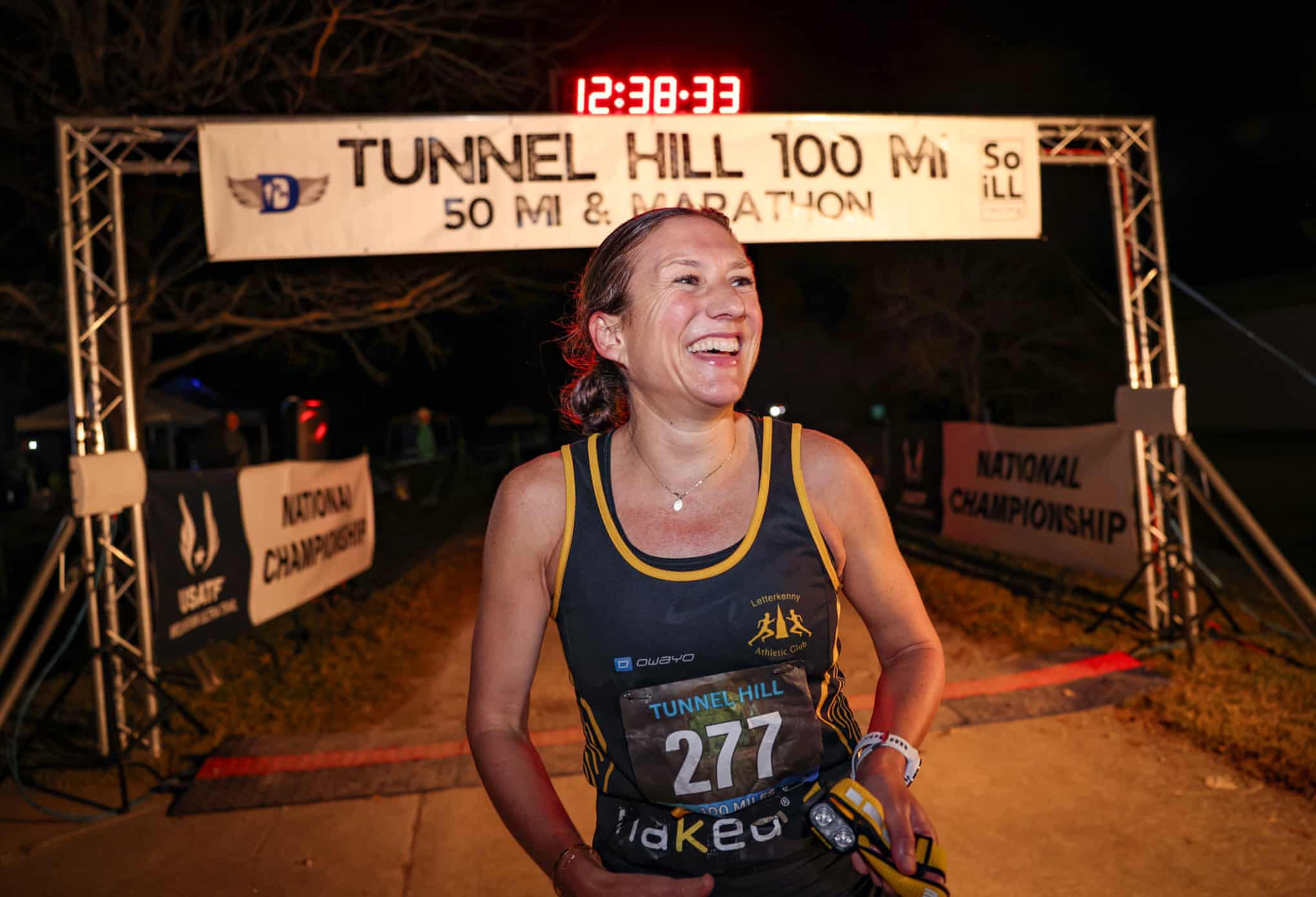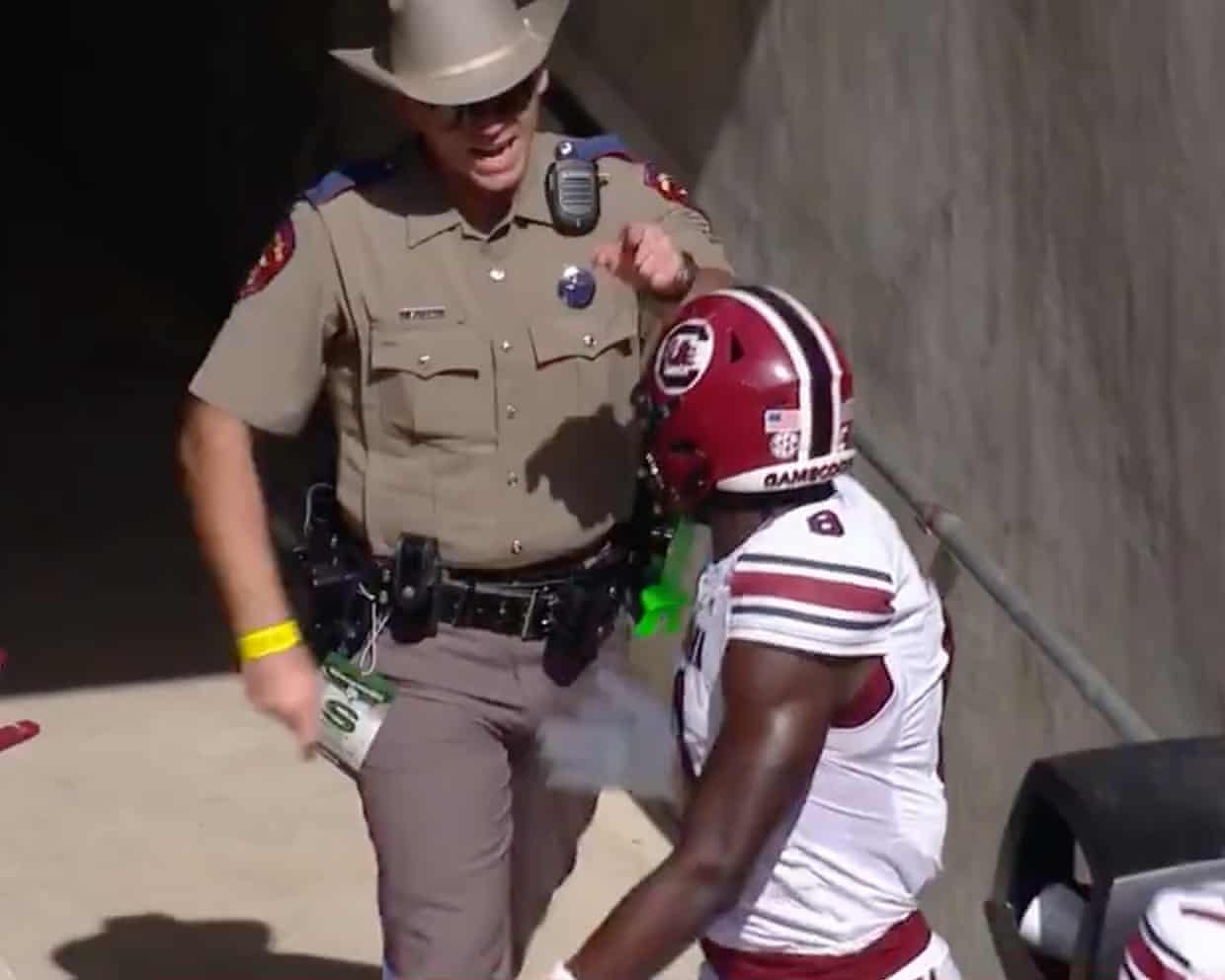‘A drug that’s very safe and healthy‘: what ultrarunners can teach us about life | Sean Ingle

Imagine being able to run a marathon in three hours and 17 minutes.That is certainly no mean feat.But now think about trying to sustain that same pace for another nine hours.To most of us, the idea veers somewhere between the fantastical and the insane.Yet that is what Caitriona Jennings, a 45-year-old ultrarunner from Donegal, did this month when breaking the women’s world record for 100 miles.
Her time for the Tunnel Hill 100 Mile in Illinois was 12hr 37min 4sec – an average pace of 7min 34sec a mile.Incredibly, until then Jennings had never run more than 60 miles in one go.Having smashed the record, she then jumped on a red-eye economy flight from Chicago that landed in Dublin at 5am.Then she cycled straight to the office, where she works for a company that trades and leases planes to global airlines.Some say ultrarunners are a little kooky, a little out of the box.
In truth, they probably are, but perhaps they can also teach us a thing or two about life, and how to live it.Jennings dismisses the idea she is any kind of superwoman.Sure, the thought of running 100 miles felt a bit crazy at first, she says.But, as an experienced runner, why not probe the boundaries of the possible? So she trained before work and during her lunch breaks, as well as running 48-64 miles every weekend, to ready herself for what lay ahead.“The hardest part in the race came after 60 miles because I hadn’t even got to the point where I could say: ‘Right, just one marathon to go now,’” she says.
“But my body held up pretty well,It was just the mental side,”Her coach, Terry McConnon, reckons Jennings has an amazing engine and some capacity for pain,The fact she finished the London 2012 Olympic marathon despite suffering a stress fracture in her foot suggests he has a point,A little struggle, she says, is no bad thing.
“You need to sustain a certain amount of pain because that’s just the nature of the game.If you are going to run that fast, for that long, you’re going to hurt unless you’re superhuman.I think I’ve had such a strong desire to do well and to win that I’m willing to suffer a little in order to get that.”Intriguingly, Jennings is not the only ultrarunner in her 40s proving it is possible to juggle the preternatural and the normal.In October, Sarah Webster, a 46-year-old vet from East Sussex, took down the women’s 24-hour world record at the world championships in France, running an astonishing 173.
1 miles.Then there is Jasmin Paris, who last year battled hallucinations and no sleep to become the first woman to complete the Barkley marathon, which consists of five 20-mile loops with more than 12,000 feet of elevation gain per loop, in the 60-hour time limit.That was the culmination of months of training from 5am to 7.45am, before her two children were up and she started work.“It sounds a bit corny, but you also find out more about yourself, when you strip away all the stuff that makes life easier,” she says.
That theme is explored in a new film, Run Again, that charts the singer Dave Pen’s attempt to complete the 268-mile Spine Race along the Pennine Way.“People say are you mad?” he says at one point.“But it’s not madness, is it? It’s living.I wanted to do something other people don’t do.I like extremes.
”At the end of the film, which has its UK premiere in London on Thursday, Pen trudges to the finish in 145hr 44min 45sec – more than 62 hours slower than Paris when she won the race in 2019.Sign up to The RecapThe best of our sports journalism from the past seven days and a heads-up on the weekend’s actionafter newsletter promotionNot surprisingly, Pen, whose band Archive is popular across Europe, looks desperately sleep‑deprived, exhausted and frozen to his core.And yet he promises to be back.Adharanand Finn was on to something when he described ultrarunning as a metaphor for life, with all its ups and downs, its struggles and revivals.In his brilliant book, The Rise of the Ultrarunners, Finn cites a tattoo the Spanish ultra-athlete Azara García de los Salmones has on her leg, as indicative of what pushes competitors on.
“The devil whispered in my ear: ‘You’re not strong enough to withstand the storm,’ it reads,“I whispered back: ‘I am the storm,’”Finn asks: “Is this the appeal of ultrarunning? To push ourselves to a place where we stand face to face with the devil, the depths of the struggle, but then to rise up to overcome it?”When I put this to Jennings, she laughs and calls it an interesting theory,But for her there is something else,“As humans we’re not really designed to be on screens all day.
We crave being in nature and having breaks from the noise in our heads.But, yes, you do get a huge sense of achievement from accomplishing a challenge you’ve set yourself.It’s like a drug that’s a very safe and healthy one.”There is one thing that surprises her.“I would like for other women to see what I’m doing and realise it’s not actually that difficult.
” I have people say to me quite a lot, ‘Oh, I’d love to do that, but I wouldn’t be able to.’ That still frustrates me.Because you can if you really want to and you’re willing to put in the work.”Jennings is certainly living testament to that.

Why Australia will win v why England can win: two Guardian cricket writers make their Ashes cases
Even the greats of the Ashes have been weighed down by 143 years of shared history, tradition and controversy. For keen observers of Australia and England, Ashes anxiety can cloud judgments, hopes and dreams. Personally, a heart still bearing the scars from more than a decade spent living behind enemy lines as a once all-conquering Australia failed to tie – let alone win – an Ashes series in England, now insists on managing expectations. But as the ICC’s top two-ranked men’s Test teams prepare for a contest set to be shaped as much by endurance as execution, the head is ready to rule with a quiet confidence that Australia will triumph in a fourth straight Ashes as hosts.The current Australia outfit falls short of the best the nation has produced just in this century

A trooper’s shove showed stardom doesn’t protect Black athletes from police | Etan Thomas
It was 1996, my first day stepping foot on Syracuse University’s campus. I saw a big student protest was taking place so, with my freshman’s inquisitive mind, I ventured over to see what was going on.I listened to a passionate sista named Kathy Ade, the president of Syracuse’s student African-American Society. She stood there with her Bantu knots and a megaphone addressing the crowd, discussing the fact that campus security was now going to be able to carry pepper spray. In the 90s – which my daughter Baby Sierra calls “the 1900s,” just to keep me humble – campus security carrying pepper spray was a big deal

The Breakdown | Could new Nations Championship transform Test rugby? The jury is out
There is logic to the fresh international format, due to launch next year, but glaring issues and logistical challenges tooOK, let’s just pick the ball up and run with it for a little while. A reimagined global Test landscape pitching the northern hemisphere against the south commencing next July. Twelve men’s national sides playing six games each with a final playoff weekend. Concluding with one champion team hoisting a shiny trophy aloft in front of, hopefully, a worldwide television audience of millions.On paper – and years of scribbling on the backs of envelopes have gone into this – there is some logic to it

Mark Wood declared fit for first Ashes Test as England seamers ‘lick their lips’ at surface
Mark Wood is fully fit and available for selection in the first Ashes Test on Friday, having come through an extended spell of bowling at full pace in the Perth Stadium nets without any problems – before emerging with his pads on to have a bat minutes later – as England’s seamers found conditions at the ground so good they were “licking their lips”.Wood’s left leg was heavily strapped throughout, as it has been since he returned after surgery to that knee in March, but the tightness in his hamstring that concerned him during the first day of England’s warm-up against the Lions at Lilac Hill last week has dissipated. It is believed that the scan he had last Friday was primarily intended to alleviate the player’s fitness worries, with the team’s medical staff never hugely concerned.Jamie Smith was one of the batters who faced Wood in the nets on Tuesday. “He was absolutely rapid today, I can tell you that first-hand,” he said

The Luka Era begins: inside the transformation powering the post-LeBron Lakers
Shipped out of Dallas and dropped into Hollywood, Dončić has responded with a leaner body, a louder voice and a growing command of the Lakers’ post-LeBron futureIt’s been nine and a half months since the trade that rocked the sports world was broken via a Shams Charania tweet. It was such a shock that the majority of his followers assumed he’d been hacked. Fresh off of a trip to the NBA finals, the young Slovenian superstar Luka Dončić was shipped off in the middle of the night to the Los Angeles Lakers for Anthony Davis, and the NBA as we know it was changed for ever. The fallout from one of the most shocking trades in sports history is still evolving: disgraced Mavericks general manager Nico Harrison, who spearheaded the transaction, was let go by the team last week, in a move Mavericks fans have been loudly clamoring for since news broke that their homegrown franchise player was being abruptly cast out to sea. But on the other side of the coin was a mixed blessing and a new beginning: Dončić, who had imagined spending his entire career in Dallas like his mentor Dirk Nowitzki, suddenly found himself recast as the face of the NBA’s most famous franchise under the bright lights of Hollywood

‘A drug that’s very safe and healthy‘: what ultrarunners can teach us about life | Sean Ingle
Imagine being able to run a marathon in three hours and 17 minutes. That is certainly no mean feat. But now think about trying to sustain that same pace for another nine hours. To most of us, the idea veers somewhere between the fantastical and the insane. Yet that is what Caitriona Jennings, a 45-year-old ultrarunner from Donegal, did this month when breaking the women’s world record for 100 miles

Ocado’s share price is back where it started. Are its robots just too fancy?

Visma approaches City grandee to act as chair if €20bn London listing goes ahead

What is Cloudflare – and why did its outage take down so many websites?

Cloudflare says ‘incident now resolved’ after outage causes error messages across the internet – as it happened

England turn to Noah Caluori for Argentina Test after triple injury blow

I can’t remember ever being so confident at the start of an away Ashes series | Mark Ramprakash